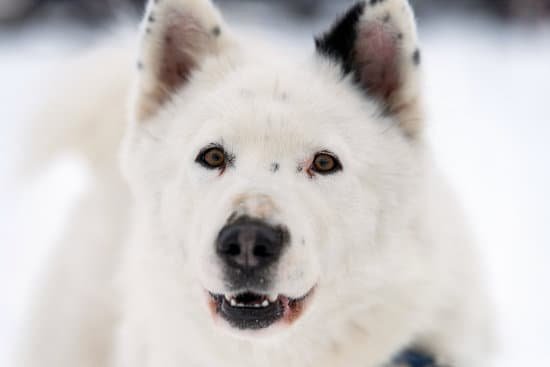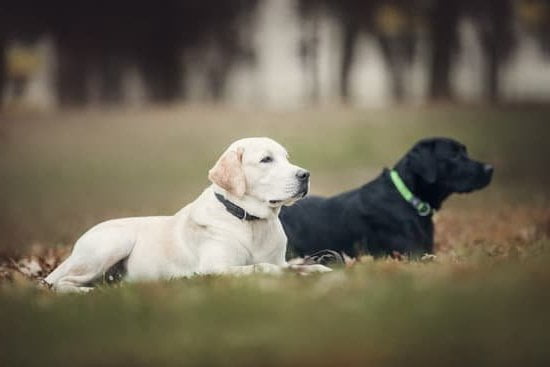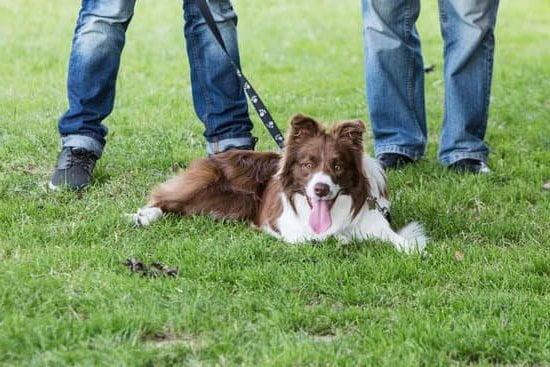When potty training your dog, one of the most important things to remember is to keep them in a confined space so you can easily monitor their behavior. A divided dog crate is the perfect way to do this.
The crate can be set up with one side for the dog to sleep in and the other side for them to potty in. This will help keep them in one spot and make it easier for you to keep an eye on them.
If you are crate training your dog, make sure to only use the crate for short periods of time. Puppies should not be crated for more than 3-4 hours at a time and adult dogs should not be crated for more than 8 hours.
How To House Train An Older Dog Without A Crate
While many people successfully house train their puppies using a crate, this approach does not work as well with older dogs. Dogs that are house trained using a crate may begin to soil their crate as they age, and may be reluctant to eliminate outside the crate. There are a number of methods you can use to house train an older dog without a crate.
One approach is to create a designated potty area for your dog. This could be an outdoor area where you have placed a number of newspapers, or an indoor area where you have placed a pee pad or a specific spot on the floor that your dog is allowed to use. When you first notice your dog indicating that he needs to go to the bathroom, take him to the designated potty area immediately. If he eliminates there, praise him and give him a treat. If he does not eliminate, take him back inside and continue to watch him closely.
Another approach is to take your dog outside on a regular schedule, regardless of whether or not he has recently eliminated. For example, take your dog outside first thing in the morning, after each meal, and before bedtime. Once your dog is consistently eliminating outdoors, you can gradually reduce the number of times you take him outside each day.
If you are at home during the day, you can also watch your dog carefully and take him outside whenever you see him start to sniff around or walk in a circle. If you are not able to watch your dog constantly, you can put him in a designated confinement area (such as a small room or bathroom) with a potty pad or a few newspapers until you can take him outside.
It is important to be patient and consistent when house training an older dog. If you are consistent in taking your dog to the designated potty area and outside on a regular schedule, he will eventually learn where to eliminate.
Crate Training Adopted Dog
If you have recently adopted a dog, crate training can be an extremely helpful tool for housebreaking and for providing your dog with a sense of security and calm. Crate training can be used as a short-term solution or as a long-term training method.
The key to successful crate training is to make the crate a positive experience for your dog. You should never use the crate as a punishment tool.
The crate should be big enough for your dog to stand up, turn around, and lie down in comfortably. If your dog is still a puppy, you may need to purchase a larger crate as your dog grows.
Begin by placing the crate in a quiet, comfortable spot in your home. Place a soft blanket or towel in the crate and some of your dog’s favorite toys.
Start by placing your dog in the crate for a very short period of time, such as just a few minutes. Gradually increase the time your dog spends in the crate.
If your dog starts to whine or bark, do not respond to the behavior. Wait until your dog is quiet before releasing him from the crate.
If your dog is having a difficult time adjusting to the crate, you may want to try using a food-based positive reinforcement system. Whenever your dog enters the crate, give him a few pieces of his favorite food. Once your dog is calmly spending time in the crate, stop giving him the food.
Best Dog Bed For Crate Training
If you are crate training your dog, you will need to find the best dog bed for crate training. This is because dogs need a comfortable place to sleep while they are in their crates. A comfortable dog bed will help make the crate training process more successful.
There are many different types of dog beds available, so you will need to choose one that is specifically designed for crate training. Some dog beds are made from soft materials like fleece or chenille, while others are made from hard materials like plastic or metal.
You will also need to consider the size of the dog bed. It should be large enough to fit inside the crate, but not so large that it takes up too much space.
The best dog bed for crate training is one that is comfortable, fits inside the crate, and is made from a hard material.
How To Crate Train A Dog With Separation Anxiety
Separation anxiety is a common problem in dogs, and can be difficult to treat. One approach that can be helpful is crate training.
Dogs with separation anxiety may become agitated or destructive when left alone. They may also bark, whine, or cry excessively. Crate training can help to alleviate these behaviors by providing the dog with a sense of security and comfort.
The first step in crate training a dog with separation anxiety is to get the dog comfortable with the crate. Start by placing the crate in a quiet, low-traffic area of the house. Put a few toys and treats inside the crate, and allow the dog to explore it at his own pace.
Once the dog is comfortable with the crate, begin feeding him his meals inside it. Gradually increase the amount of time the dog spends in the crate, until he is comfortable staying in it for extended periods of time.
When the dog is comfortable in the crate, start leaving him there for short periods of time when you are not home. gradually increase the amount of time the dog spends in the crate.
If the dog becomes agitated or destructive when left alone, return him to the crate and continue the training process gradually. It may take time, but crate training can be an effective way to help dogs with separation anxiety.

Welcome to the blog! I am a professional dog trainer and have been working with dogs for many years. In this blog, I will be discussing various topics related to dog training, including tips, tricks, and advice. I hope you find this information helpful and informative. Thanks for reading!





